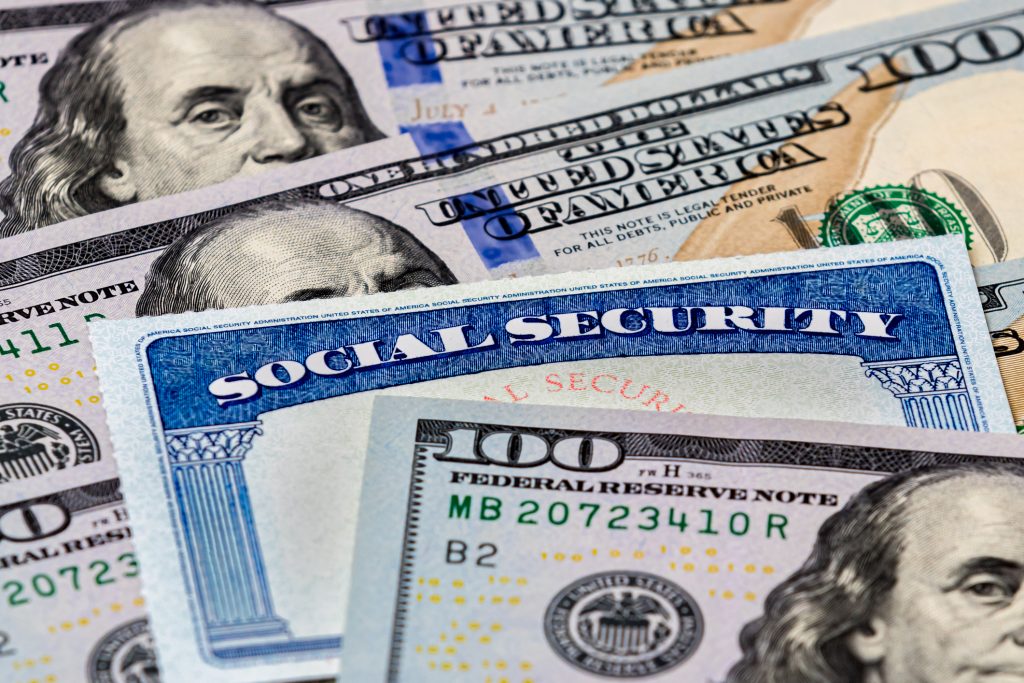
Image source: Getty Images
There’s no question that having an excellent credit score can make life easier. You might get a better mortgage rate, qualify for an excellent rewards credit card, or even rent an apartment more easily. It’s easy to become obsessed with what feels like a magic number, especially if you have a budgeting app or credit card that tracks your score for free.
All the same, your credit score doesn’t really tell you how you’re doing financially. Sure, it shows how well you can handle debt. But you could be living paycheck to paycheck with limited savings, terrified about your lack of retirement funds, and still have a great credit score.
Here are three better ways to track your financial health.
1. Your emergency fund balance
How much money do you have in savings to cover you when life throws you a curveball? If the answer is not a lot, you’re not alone. A recent Empower survey showed that around 4 in 10 Americans couldn’t afford an emergency expense of $400. The difficulty is that you don’t have anything to protect you if you lose your job or have to pay, say, a big medical bill.
What to aim for
Many financial advisers suggest you set aside three to six months’ worth of living expenses. The exact amount depends on your situation. If you’re the main breadwinner with several people who rely on your income, you may want a bigger safety net than someone who lives alone and has several sources of income.
Some top high-yield savings accounts pay rates that are nine- or 10-times the national average. Those high APYs can help you reach your savings goals. For example, you can earn 5.11% APY with the Western Alliance Bank High-Yield Savings Premier account. Click here to learn more and open an account today.
Look over your essential expenses such as housing, bills, food, and transportation. If they come to around $5,000 a month, you’d need to aim for $15,000 to $30,000 in your emergency fund. If that feels like an impossible target, start with something lower. You don’t have to get there overnight — transfer a small amount into your savings every month and watch it grow.
2. Your net worth
Your net worth is a snapshot of your financial situation right now. It’s a great way to track how you’re doing financially. It’s essentially your assets (what you own) minus your liabilities (what you owe). It shows you whether you are building wealth, which is a good indicator of things like your readiness for retirement.
To calculate your net worth:
- Add up the value of your assets. That includes cash in your savings and checking accounts, your investments, and the value of your house.
- Add up the amount you owe. That includes your mortgage, loans, and credit card balance.
- Subtract your liabilities from your assets. That will give you your net worth.
Your net worth is not a static number, and what matters is how it changes over time. Aim to calculate your net worth every year, to help you set goals, measure your progress, and make financial decisions.
What to aim for
The median net worth in the U.S. is $192,700, per Fool.com research. But your ideal net worth depends on your situation, income, age, and more. Compare your net worth with median figures for people in your age group to see where you stand.
Use the medians below to set yourself a target. Factor in what your net worth is now and how you plan to improve it in the coming years and decades.
| Age Group | Median Net Worth (2022) |
|---|---|
| Younger than 35 | $39,040 |
| 35-44 | $135,300 |
| 45-54 | $246,700 |
| 55-64 | $364,270 |
| 65-74 | $410,000 |
| 75 or older | $334,700 |
3. DTI ratio
Your debt-to-income ratio is how much of your income goes toward debt payments. It shows whether you are carrying a manageable amount of debt.
To calculate your DTI ratio:
- Add up how much you spend on debt each month. That includes your mortgage, loans, and credit card payments.
- Divide your total debt costs by your gross income. That’s your income before taxes and other deductions.
- Multiply by 100. This will give you a percentage.
What to aim for
A low DTI means your debt is manageable and you’ll have more cash to invest or spend on other bills. If you want to take out a mortgage or borrow money, the lower your DTI, the better. If you have a high DTI, it is time to prioritize debt repayments urgently. If you’re able to increase your income via a new job, extra hours, or a side hustle, so much the better.
These are Wells Fargo’s broad DTI guidelines:
| DTI Ratio | Guideline |
|---|---|
| 35% or less | Looking good |
| 36% to 49% | Room for improvement |
| 50% or more | Take action |
Bottom line
When you get caught up in the day-to-day pressures of managing money, you can lose the big picture. Tracking your emergency savings, net worth, and DTI can help you keep focus. Not only that, but those numbers are more useful than a credit score because they will help you build wealth over time.
Alert: highest cash back card we’ve seen now has 0% intro APR into 2026
This credit card is not just good – it’s so exceptional that our experts use it personally. It features a 0% intro APR for 15 months, a cash back rate of up to 5%, and all somehow for no annual fee!
Click here to read our full review for free and apply in just 2 minutes.
We’re firm believers in the Golden Rule, which is why editorial opinions are ours alone and have not been previously reviewed, approved, or endorsed by included advertisers.
The Ascent does not cover all offers on the market. Editorial content from The Ascent is separate from The Motley Fool editorial content and is created by a different analyst team.The Motley Fool has a disclosure policy.
 benzinga.com
benzinga.com fool.com
fool.com



